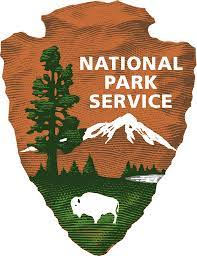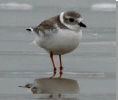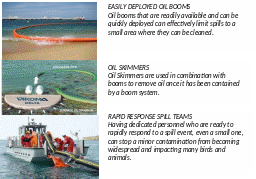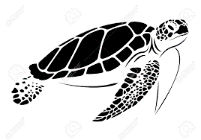Mail-back Survey - Aquatic
National Park Service Preservation Values for Individual Animals
1024-NEW PVIA Aquatic Mail-back Survey
Mail-back Survey - Aquatic
OMB: 1024-0292
OMB Control # 1024-XXXX
Expiration Date: XX/XX/XXXX
 <PARK UNIT>
<PARK UNIT>
Wildlife-Protection Survey
<Note to Reviewer: Species-Specific photos and graphics used as appropriate for the different Parks and species surveyed>


Paperwork Reduction Act Statement: The National Park Service is authorized by 54 U.S.C. 100070 to collect this information. This collection deals with the ways to reduce accidental death of <NPS UNIT> wildlife due to oil or other contaminant spills through adopting spill prevention and rapid response programs. Your responses to this collection are completely voluntary and will remain anonymous. You can end the process at any time and will not be penalized in any way for choosing to do so. Data collected will only be reported in aggregates and no individually identifiable responses will be reported. A Federal agency may not conduct or sponsor, and you are not required to respond to, a collection of information unless it displays a currently valid OMB Control Number. Your response is not required to obtain or retain a benefit. OMB has approved this collection of information and assigned control number XXXX-XXXX. The expiration date is XX/XX/xXXX
Estimated Burden Statement: Public reporting for this collection of information is estimated to be about 15 minutes per survey. Send comments regarding this burden estimate or any other aspect of this collection of information, including suggestions for reducing this burden, to the Information Collection Clearance Officer, National Park Service, 13461 Sunrise Valley Dr. (MS-244), Reston, VA 20191.
BACKGROUND INFORMATION ABOUT THIS STUDY
Please read this page before you complete the survey.
This survey deals with the ways to reduce accidental death of <NPS UNIT> wildlife due to oil or other contaminant spills through adopting spill prevention and rapid response programs. Having the equipment and personnel available to rapidly contain any localized spill would prevent the loss of wildlife. We are interested in your opinions and thoughts on wildlife protection programs and their use at <NPS Unit>.
While many species of animals are potentially involved in contamination and death from spills, this survey focuses on:
Piping Plover (a shorebird); and
Sea Turtles (5 local species, including Kemp’s Ridley).
<Note
to reviewer: piping plover and sea turtles used for exposition>
Under the Endangered Species Act, the U.S. Fish and Wildlife Service has listed the Piping Plover as Threatened in the region, and all 5 species of Sea Turtle are listed as either Threatened or Endangered.
Although spills are sporadic and unpredictable, over time sea turtles and piping plovers (among other species) are hurt or killed by oil or other contaminants.
Q1-Q2: Serving as an introduction to the survey, these questions gather background information on respondent experience with aquatic species and oil spills. Further, these questions will also be used in conjunction with screening questions asked in the park(s) to allow for non-response bias analysis and corrections (e.g., individual fills out intercept survey and their spouse fills out the mail-back survey). |
Did you personally see any sea turtles or piping plovers on your trip to <NPS UNIT>?
No q Yes
No q Yes
Q3-Q4: These questions provide experience and ranking information for allowing bracketing of species-specific values beyond those addressed in the current survey. |
Please place a check next to each of the animal species you saw while on your recent trip to <NPS UNIT>. <Note to reviewer: species list will vary by park unit>
-
Check if seen
Species
Rank preference to see
¨
Sea turtle
_____
¨
Piping Plover
_____
¨
Coyote
_____
¨
Deer
_____
¨
Raccoon
_____
¨
Jack Rabbit
_____
¨
Bald Eagle
_____
¨
Pelican
_____
¨
Lizard(s)
_____
¨
Egret(s)
_____
Now, please look at the list above and tell us which 3 species you most wanted to see on your <NPS UNIT> visit. (Place “1” next to animal you most wanted to see “2” next to the next most preferred animal, and “3” next to the third most preferred animal.)
WAYS THAT PARK MANAGERS CAN TRY TO REDUCE THE LOSS OF WILDLIFE FROM OIL SPILLS
Wildlife experts and resource managers have found several methods that significantly reduce the number of birds and other animals hurt or killed by oil spills. Below are three commonly used and effective tools.

Q5-Q6: These questions will inform and set the stage for the following hypothetical animal protection programs and the discrete choice questions on animal valuation. |
Q5. Have you heard about these types of oil spill containment measures before reading this survey?
No q Yes
Q6. Have you personally seen any of these types of oil spill containment measures?
A potential program to reduce potential wildlife mortality due to oil spills near <NPS UNIT>
A possible solution to reduce wildlife mortality would be funding a program to purchase oil containment boom systems and skimmers that could be quickly deployed to reduce or nearly eliminate sea turtle and piping plover deaths from small spills along the seashore. A key component of this would be to maintain a trained rapid deployment team to respond quickly to any reported spills.
Depending on the types, locations, and number of booms and skimmers purchased and the size of the rapid response team, different levels of protection for piping plover and turtles could be expected.
BENEFITS OF THE PROGRAM
Investing upfront in equipment and personnel could reduce the number of <NPS UNIT> birds and animals that die from contact with oil.
Rapid response could contain any oil spill effects to smaller areas and reduce impacts on the island ecosystem and visitors.
COSTS OF THE PROGRAM
Depending on the location, number, and types of oil spill control structures used, the program could have substantial costs. One method for paying these costs in parks is to have a surcharge on entrance fees during portions of the year.
The following questions ask you whether you would vote for a program to reduce sea turtle and piping plover deaths from oil spills in <NPS UNIT>. The programs proposed use different combinations of spill response equipment (booms and skimmers) and stand-by response personnel and would have different impacts on animal deaths from oil.
Also, the different programs would have different costs. We would like to know your opinions on such a program should it be considered in the future and how much you would value such a program.
For each of the following two questions, please assume that the oil spill response program would be undertaken by the park. The estimated cost is the increased entrance fees per park visit. Assume that park pass holders would be given the opportunity to make the same contribution to a wildlife protection fund when entering the park.
Q7-Q8: These two discrete choice questions describe different costs and benefits associated with alternative plans to fund the animal protection programs in the park. These questions are the core valuation questions in the survey and are needed to establish per-animal valuation. |
Over the past 5 years, oil spills near the park have resulted in an average of 200 sea turtle deaths and 50 piping plover deaths. Please ask yourself whether the reduced deaths from oil spills offered under Plan A (below) are worth the cost shown to your group in increased entrance fees to <NPS UNIT>. Current entrance fees to the park are <$> for a private vehicle for a 7-day pass or $10 for a 1-day pass. Please check ONE box at the bottom of the table to indicate whether you prefer Plan A, or no oil spill response program.
Resources impacted by plans |
PLAN A Oil spill impact reduction program |
No oil spill impact reduction program |
|
|
No change |
|
No change |
No change |
|
$5 |
$0 |
I would vote for (check only one ) |
q |
Now please consider a different choice…
We would now like to know how you would vote if you were presented with a completely different Plan. When making this choice, please imagine that the ONLY two options are Plan B and no oil spill response program.
Over the past 5 years, oil spills near the park have resulted in an average of 200 sea turtle deaths and 50 piping plover deaths. Please ask yourself whether the reduced deaths from oil spills offered under Plan B (below) are worth the cost shown to your group in increased entrance fees to <NPS UNIT>. Current entrance fees to the park are <$> for a private vehicle for a 7-day pass. Please check ONE box at the bottom of the table to indicate whether you prefer Plan B, or no oil spill response program.
Resources impacted by plans |
PLAN B Oil spill impact reduction program |
No oil spill impact reduction program |
|
|
No change |
|
|
No change |
|
$10 |
$0 |
I would vote for (check only one
|
q |
q |
Q9: This question is used to conduct sensitivity analysis of the discrete choice question responses to the respondent’s self-reported certainty. |
How certain do you feel about the choices you made above?
q Very certain q Somewhat certain q Not certain at all
Q10-Q11: These questions are used to understand respondent motivations and opinions on both their answers to the previous discrete choice questions and animal welfare, in general. The responses to these questions may be used as covariates in WTP modeling to further explain motivations for WTP. |
If you voted for the No oil spill impact Reduction Program in either of the previous choices, please rate how much you agree or disagree with the following statement. If not, skip to Q11. (circle one)
|
Strongly Agree |
Agree |
Neither Agree or Disagree |
Disagree |
Strongly Disagree |
I voted for NO OIL SPILL PROGRAM because I believe entrance fees are already too high. |
1 |
2 |
3 |
4 |
5 |
I voted for NO OIL SPILL PROGRAM because I don’t believe oil spills are a problem at Padre Island |
1 |
2 |
3 |
4 |
5 |
I voted for NO OIL SPILL PROGRAM because I don’t believe the control measures described would work to protect turtles and plovers |
1 |
2 |
3 |
4 |
5 |
We are interested in learning how you feel about wildlife in general and protecting wildlife in particular. On a scale of 1 to 5, with 1 being “strongly agree” and 5 being “strongly disagree,” please indicate how you feel about each statement written below. (Circle one number for each statement)
Statement |
Strongly Agree |
Agree |
Neither Agree or Disagree |
Disagree |
Strongly Disagree |
I have a great deal of concern for protecting wildlife. |
1 |
2 |
3 |
4 |
5 |
Wildlife species must be beneficial to humans to deserve protection. |
1 |
2 |
3 |
4 |
5 |
It is important to protect rare animals to maintain genetic diversity. |
1 |
2 |
3 |
4 |
5 |
I am concerned about animals dying from pollution |
1 |
2 |
3 |
4 |
5 |
Q12-Q13: These questions present an alternative WTP question framework which will act as a cross-verification/calibration tool for the previous discrete choice valuation question results. The “Payment Card” question format has advantages as an alternative valuation method because the respondent data can be modeled in a variety of ways, from using simple averages to using more complex parametric survival models. The resulting analysis provides a robust method for estimating respondent WTP. The proposed payment card addresses the above considerations by providing a range of 9 potential choices to select from, ranging from $0-$250 or more. |
Rather than paying for an oil spill response program with increased park entrance fees, another possible method of financing the structures would be through voluntary donations to a spill response trust fund in <NPS UNIT>. If such a trust fund existed, what is the largest amount you be willing to give in a one-time donation to fund a program if your donation was predicted to prevent 20 sea turtle deaths over time? (Circle the largest one-time donation you would be willing to make)
-
$0
(No donation)
$2
$5
$10
$25
$50
$75
$150
$250 or more
Now please consider a trust fund to pay for an oil spill response program designed primarily to prevent piping plover deaths. If such a trust fund existed, what is the largest amount you be willing to give in a one-time donation to fund a program if your donation was predicted to prevent 20 piping plover deaths over time?
(Circle the largest one-time donation you would be willing to make)
-
$0
(No donation)
$2
$5
$10
$25
$50
$75
$150
$250 or more
In this last section, we
would like to ask you some questions about your background that will
help us compare your answers with those of other people.

Q14-Q20: This data will be used both as explanatory covariates in WTP modeling and as possible non-response bias tests when compared with screening question responses from park intercepts and non-respondents. |
What is your gender?
¨ Male ¨ Female ¨ Transgender, non-binary, or another gender
What is your age? ________ years old
What is the highest degree or level of school you have completed?
¨ No high school diploma
¨ High school diploma or GED
¨ Some college credit or Associate’s degree (for example: AA)
¨ Bachelor’s degree (e.g. BA or BS)
¨ Some graduate school or professional school or degree
Which of the following categories best describes your household employment status? (Check all that apply)
¨ Employed full-time ¨ Employed part-time ¨ Retired
¨ Student ¨ Full-time homemaker ¨Unemployed
¨ Other
Are you Hispanic or Latino?
No o Yes
Please select the racial category or categories with which you most closely identify. (Check one or more)
¨ American Indian or Alaska Native
¨ Asian
¨ Black or African American
Native Hawaiian or Pacific Islander
¨ White
What was your total pre-tax household income, including all earners in your household, in 2022?
Under $25,000
$25,000 to $34,999
$35,000 to $49,999
$50,000 to $74,999
$75,000 to $99,999
$100,000 to $199,999
$200,000 or more
THANK YOU FOR YOUR HELP!
Please return only this survey booklet in the
enclosed, postage-paid envelope
For questions, contact:
Chris Neher (406) 721-2265
| File Type | application/vnd.openxmlformats-officedocument.wordprocessingml.document |
| Author | Ponds, Phadrea |
| File Modified | 0000-00-00 |
| File Created | 2023-12-13 |
© 2025 OMB.report | Privacy Policy
 Change
in <Park Unit> turtle deaths
Change
in <Park Unit> turtle deaths
 50%
decrease in number of Sea Turtle Deaths from oil (100 in total
over 5 years)
50%
decrease in number of Sea Turtle Deaths from oil (100 in total
over 5 years) Change
in <Park Unit> Piping Plover deaths
Change
in <Park Unit> Piping Plover deaths
 Cost
to your group in increased park entrance fees DOLLARS
PER TRIP
Cost
to your group in increased park entrance fees DOLLARS
PER TRIP 5%
decrease in number of Sea Turtle deaths from oil (10 in total over
5 years)
5%
decrease in number of Sea Turtle deaths from oil (10 in total over
5 years) 50%
decrease in number of Piping Plover deaths from oil (25 in total
over 5 years)
50%
decrease in number of Piping Plover deaths from oil (25 in total
over 5 years) Cost
to your group in increased park entrance fees DOLLARS
PER TRIP
Cost
to your group in increased park entrance fees DOLLARS
PER TRIP